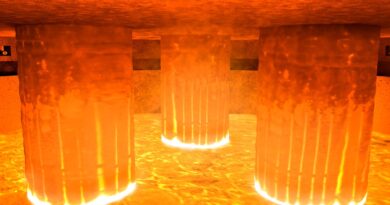Recent trends in refractories for Non-Ferrous Metals
Although the combined needs of the global iron and steel industry still continue to dominate the market, the cement and glass industries refractories requirements are also increasing, and although the needs of the non-ferrous industries are relatively small in comparison, they can still provide a valuable niche market for refractories producers, looking for regular repeat business across a wide range of refractories materials and product types.
Introduction
Taking a consensus of available information, current worldwide consumption is claimed to be more than 38 Mt/a, and is forecast to grow to 40 Mt in the very short term. Predicted growth rates tend to vary between 2–4 %/a, and the growth rate is said to be driven by the increasing needs of the steel and cement industries along with major infrastructure projects many in China. From 1995 until today, global steel production has increased from about 75 Mt/a to over 200 Mt/a or a combined increase of approximately 170 %.
This has definitely helped generate much of the increase in refractories production, since the best industry practice still requires at least 10 kg of refractories for each ton of steel produced.
If we use the indication of the requirements of end user industries as shown above, then the global market for refractories will reach approximately 40 Mt/a this year, with an estimated value of over USD 25 billion. It can therefore easily be seen, why more consideration should be given to the end users of refractories in the non-ferrous metals sector, if indeed they are consuming up to 4 Mt each year.
Obviously, the total amount of each non-ferrous metal produced is an important factor in assessing the potential for overall refractories requirements, but in looking at tonnage, it is also very necessary to factor in the different densities and also the very different monetary values of each metal or alloy, and of course the refractories required to produce it.
It is equally important to consider that while the primary production is the first step in obtaining each metal, there are also many important and large secondary applications in each market sector. The proportion of these is often refractories product growing, due partly to greatly increased recycling while the primary production can be static or falling.




